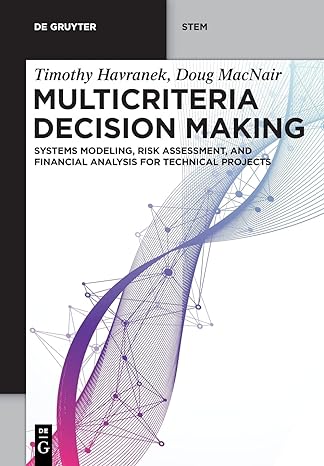Question
In this chapter will focus more on the accounting and management of receivables because it is a more difficult topic. Accounts Receivable Control Account consists
In this chapter will focus more on the accounting and management of receivables because it is a more difficult topic. Accounts Receivable Control Account consists of the amounts that are owed by all customers. Nothing ever gets posted to this account unless it originates from a transaction that affects customer's account. When a customer charges a purchase, the customer's account is debited and a similar debit is posted in the Accounts Receivable Control Account. Remember, that an individual's account is not a part of the general ledger accounts. Customers records are maintained in a subsidiary record simply referred to as Accounts Receivable Subsidiary ledger.
When a business sells on account, some customers will default on the amounts owed. A business can either write off when it is satisfied that it cannot be collected or it can create Allowance for Bad Debts Accounts to proactively accommodate this possibility . The amounts posted to this account are used to adjust Accounts Receivable to reflect the amount the business expects to collect from the customers.
The principles of revenue recognition is reviewed, which leads to a discussion of accounts and notes receivable. Receivables are monetary claims against others and are acquired by selling goods and services and by lending money. Internal controls over cash collections on account are shown, and the management of risk in not collecting on receivables is discussed.
The allowance for uncollectible accounts is introduced, and the two methods related to bad debt are explained. The allowance method is the best way to measure bad debts, and can be computed by using either the percent-of-sales method or the aging-of-receivables method. The direct write-off method may also be used, although this is the less preferable way to account for uncollectible receivables.
The chapter explains the terms related to notes receivable, as well as the related accounting. Additionally, an illustration of how to speed up cash flow from receivables is shown. This can include accepting credit card or bankcards, as well as the concept of selling (factoring) receivables. The chapter also explains how receivables and short-term investments are shown on the statement of cash flows.
Assignment:
Assume a company has $15,000,000 in outstanding Accounts Receivable as of December 31, 2012. It does not expect to collect 5% of this amount. The Allowance for Bad or Doubtful Debts Account has a debit balance of $25,000.
Required:
1. Calculate the amount that should be charged to Bad Debts expense for the current year. Show the journal entries that will be posted to record these transactions.
2. A customer whose account balance of $5,000 had been written off now wishes to clear his name and has sent a check for the amount he owed. Show the journal entries that will be required to record this transaction
Step by Step Solution
There are 3 Steps involved in it
Step: 1

Get Instant Access to Expert-Tailored Solutions
See step-by-step solutions with expert insights and AI powered tools for academic success
Step: 2

Step: 3

Ace Your Homework with AI
Get the answers you need in no time with our AI-driven, step-by-step assistance
Get Started


